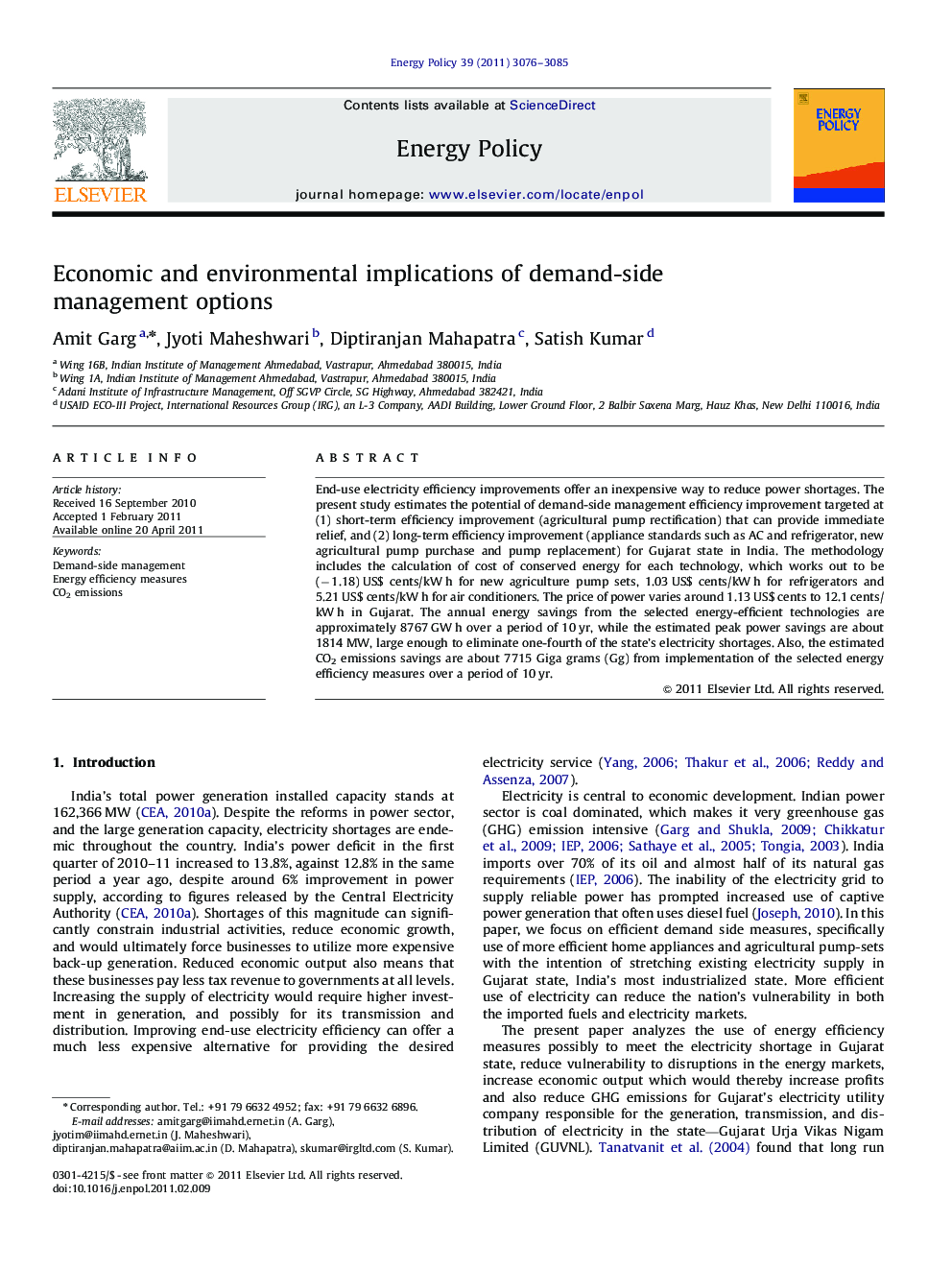| Article ID | Journal | Published Year | Pages | File Type |
|---|---|---|---|---|
| 994894 | Energy Policy | 2011 | 10 Pages |
End-use electricity efficiency improvements offer an inexpensive way to reduce power shortages. The present study estimates the potential of demand-side management efficiency improvement targeted at (1) short-term efficiency improvement (agricultural pump rectification) that can provide immediate relief, and (2) long-term efficiency improvement (appliance standards such as AC and refrigerator, new agricultural pump purchase and pump replacement) for Gujarat state in India. The methodology includes the calculation of cost of conserved energy for each technology, which works out to be (−1.18) US$ cents/kW h for new agriculture pump sets, 1.03 US$ cents/kW h for refrigerators and 5.21 US$ cents/kW h for air conditioners. The price of power varies around 1.13 US$ cents to 12.1 cents/kW h in Gujarat. The annual energy savings from the selected energy-efficient technologies are approximately 8767 GW h over a period of 10 yr, while the estimated peak power savings are about 1814 MW, large enough to eliminate one-fourth of the state's electricity shortages. Also, the estimated CO2 emissions savings are about 7715 Giga grams (Gg) from implementation of the selected energy efficiency measures over a period of 10 yr.
► End-use electricity efficiency improvements offer an inexpensive way to reduce power shortages. ► Estimated energy savings are 8767 GWh over 10 years and peak savings are 1814 MW, large enough to eliminate one-fourth of Gujarat state's power shortages. ► CO2 emissions savings are 7715 Giga grams over 10 years. ► Unit cost of conserved energy is up to 50% of that of production. ► It would be cost effective for utilities to bear full incremental capital cost of replacing inefficient energy devices.
